A separation agreement template is a crucial document for couples who are going through a separation or divorce. This legally binding document outlines the terms and conditions of the separation, including division of assets, child custody, spousal support, and other relevant issues. Using a template can simplify the process, ensuring that all necessary aspects are covered while reducing legal costs and time spent on negotiations.
Why Use a Separation Agreement Template?
Separation agreements are designed to provide clarity and fairness for both parties involved. Here are some reasons why using a template can be beneficial:
- Cost-Effective: Hiring lawyers to draft a separation agreement can be expensive. Templates provide a cost-effective alternative, allowing couples to draft their agreements with minimal legal intervention.
- Time-Saving: Templates streamline the process, helping couples to quickly and efficiently outline their terms without the lengthy back-and-forth typically associated with legal negotiations.
- Comprehensive Coverage: High-quality templates ensure that all necessary aspects of the separation are addressed, minimizing the risk of overlooking critical issues that could lead to disputes later on.
- Customization: While templates provide a solid foundation, they can also be customized to suit the unique needs and circumstances of each couple, ensuring a fair and personalized agreement.
Key Components of a Separation Agreement Template
To create a thorough and effective separation agreement, it is essential to include several key components:
1. Identification of Parties
The agreement should identify both parties involved in the separation, including full names, addresses, and other relevant personal information.
2. Date of Separation
Specifying the date of separation is crucial as it establishes the official start of the separation period, which can affect various legal and financial aspects.
3. Division of Assets and Liabilities
This section outlines how the couple’s assets and liabilities will be divided. This includes:
- Real Estate: Distribution of any property owned by the couple, including the family home and any additional real estate.
- Financial Accounts: Division of bank accounts, investments, retirement accounts, and other financial assets.
- Personal Property: Allocation of personal belongings, such as vehicles, furniture, and other valuables.
- Debts: Responsibility for any outstanding debts, including mortgages, loans, and credit card balances.
Top Free Separation Agreement Templates
Here is my selection of the top 5 Free Separation Agreement Templates to assist you quickly.
***** Template Rated 1st *****
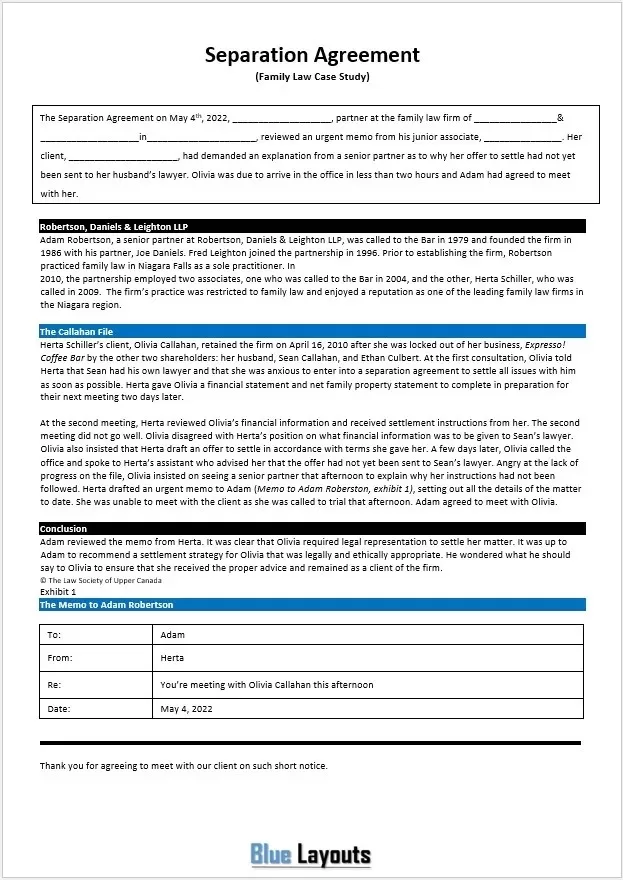
Source: bluelayouts.org
**** Template Rated 2nd ****
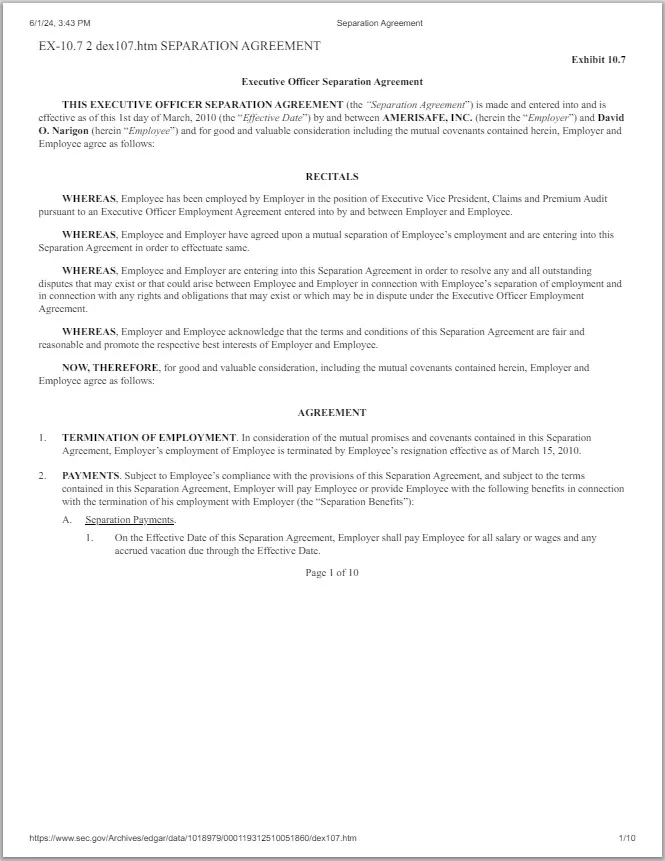
Source: sec.gov
**** Template Rated 3rd ****
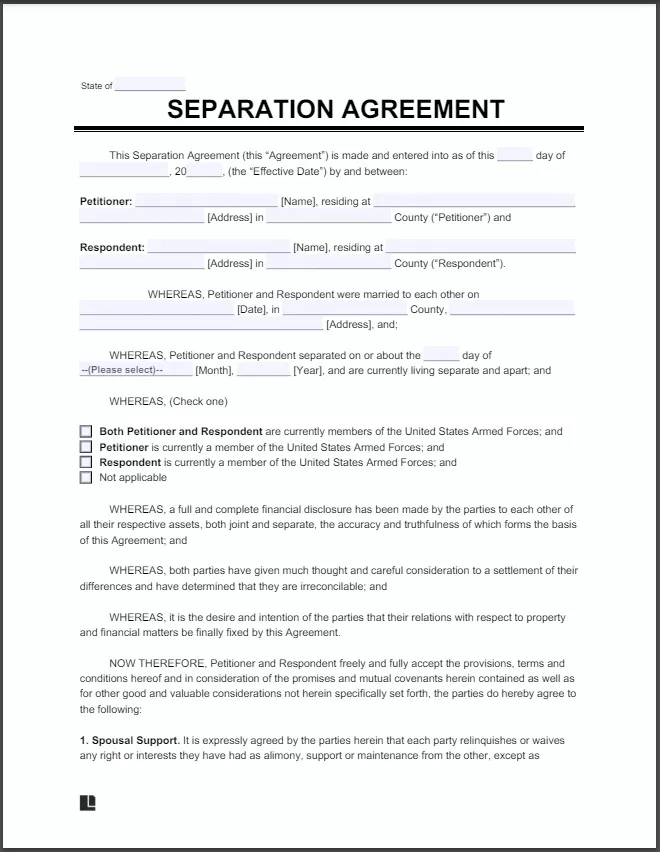
Source: legaltemplates.net
**** Template Rated 4th ****
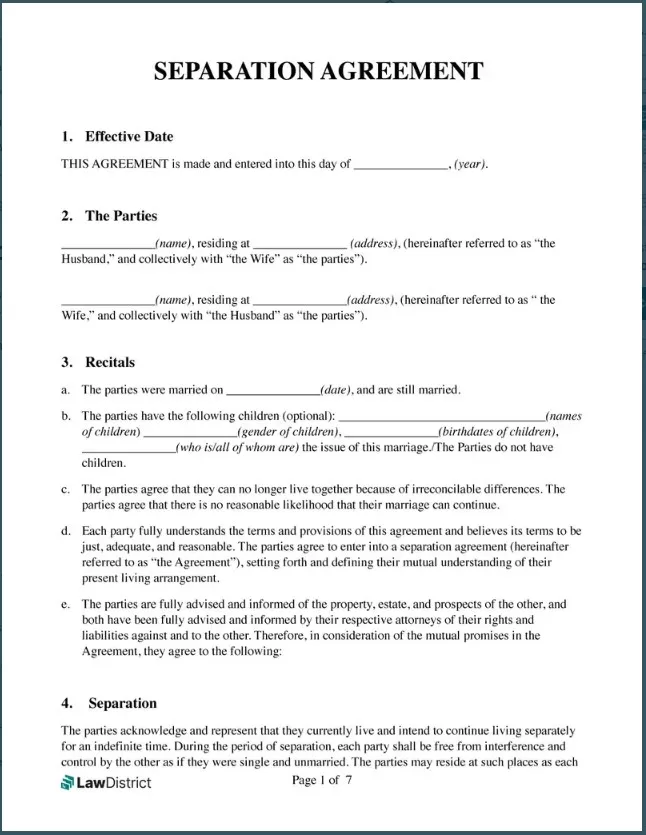
Source: lawdistrict.com
**** Template Rated 5th ****
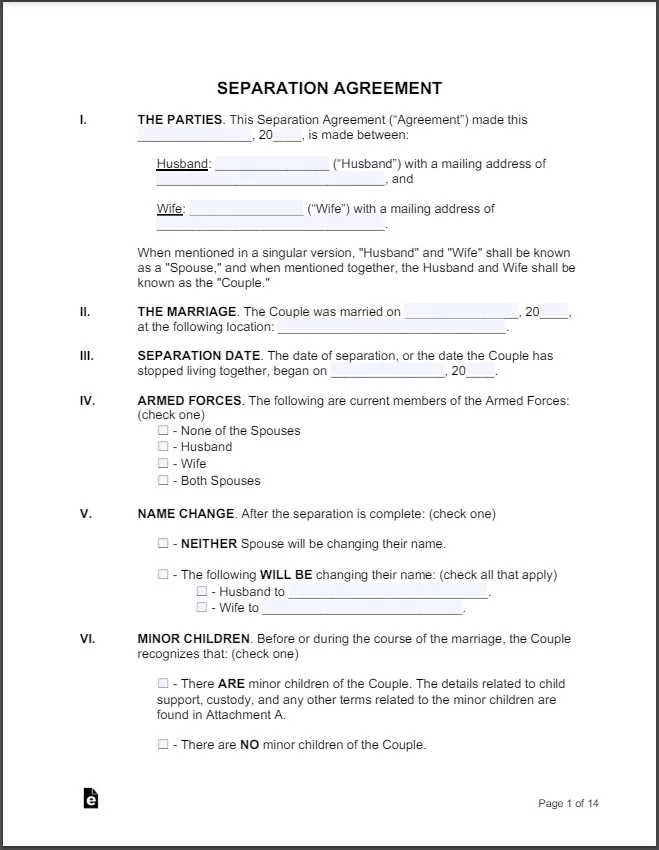
Source: eforms.com
4. Spousal Support
If one party is entitled to spousal support, this section should detail the amount, frequency, and duration of payments. It may also include provisions for adjusting support based on changes in circumstances, such as income fluctuations or remarriage.
5. Child Custody and Support
For couples with children, the agreement must address child custody and support arrangements, including:
- Custody: Determining whether custody will be joint or sole, and outlining the specific responsibilities and rights of each parent.
- Visitation: Establishing a visitation schedule that ensures the non-custodial parent has regular and meaningful contact with the children.
- Support: Detailing the amount of child support to be paid, along with the payment schedule and any provisions for adjusting support based on changes in financial circumstances.
6. Health and Insurance
This section should specify how health insurance coverage and medical expenses for both parties and any children will be handled, including:
- Health Insurance: Which party will maintain health insurance coverage and any provisions for covering additional medical expenses.
- Life Insurance: Requirements for maintaining life insurance policies, including beneficiary designations and coverage amounts.
7. Retirement and Pensions
Outlining how retirement accounts and pensions will be divided ensures that both parties receive a fair share of these long-term assets. This may include:
- Division of Retirement Accounts: Details on how 401(k)s, IRAs, and other retirement accounts will be split.
- Pension Plans: Provisions for dividing pension benefits, including any necessary Qualified Domestic Relations Orders (QDROs).
8. Miscellaneous Provisions
To address any unique circumstances or additional issues, the agreement may include miscellaneous provisions, such as:
- Tax Considerations: Allocation of tax liabilities and benefits, including deductions and credits.
- Dispute Resolution: Methods for resolving future disputes, such as mediation or arbitration.
- Amendments and Modifications: Procedures for amending or modifying the agreement if necessary.
Legal Considerations
While using a template can simplify the process, it is essential to ensure that the agreement is legally sound. Here are some legal considerations to keep in mind:
1. Legal Advice
Although templates can be a valuable resource, it is advisable to seek legal advice to ensure that the agreement is fair and complies with local laws. A lawyer can review the document and guide on any legal implications.
2. State Laws
Family law varies by state, so it is crucial to ensure that the agreement complies with the specific laws and regulations in your jurisdiction. This includes understanding the legal requirements for separation, child custody, support, and division of assets.
3. Notarization and Witnessing
In some states, a separation agreement must be notarized or witnessed to be legally binding. Check your local requirements to ensure that the agreement is properly executed.
4. Enforceability
To be enforceable, the agreement must be fair and entered into voluntarily by both parties. Any signs of coercion, fraud, or undue influence can render the agreement invalid.
Tips for Creating an Effective Separation Agreement
Creating a comprehensive and effective separation agreement requires careful consideration and attention to detail. Here are some tips to help you through the process:
1. Communicate Openly
Open and honest communication is essential for reaching a fair and mutually agreeable settlement. Both parties should discuss their needs, concerns, and expectations to ensure that the agreement reflects their shared goals.
2. Be Realistic
When negotiating the terms of the agreement, it is important to be realistic and practical. Consider the financial implications and long-term impact of your decisions, and strive for a balanced and fair outcome.
3. Keep Children’s Best Interests in Mind
If you have children, their well-being should be the top priority. Ensure that custody, visitation, and support arrangements are designed to provide stability and security for your children.
4. Review and Revise
Take the time to review the agreement carefully and make any necessary revisions. It may be helpful to have a neutral third party, such as a mediator or legal advisor, review the document to ensure that it is fair and comprehensive.
5. Document Everything
Keep detailed records of all communications, negotiations, and agreements throughout the separation process. This documentation can be invaluable in resolving any future disputes or misunderstandings.
Conclusion
A separation agreement template can be an invaluable tool for couples navigating the complexities of separation or divorce. By providing a structured and comprehensive framework, templates can help ensure that all necessary aspects are addressed, reducing stress and legal costs. However, it is essential to seek legal advice and tailor the agreement to your specific needs and circumstances to ensure that it is fair, legally sound, and enforceable. With careful planning and open communication, a well-crafted separation agreement can provide clarity and stability for both parties as they move forward.

Jim Karter is a seasoned blogger with a profound interest in the intricacies of office document processes. With years of experience in the field, Jim has dedicated his career to helping individuals and businesses streamline their daily tasks through the use of efficient and practical templates. His passion for organization and productivity shines through in every piece of content he creates.
Related Posts:
- Ensuring Smooth Tenancy with Effective Occupancy…
- Protecting Your Assets with Effective Equipment…
- Protect Your Rights with Effective General Purpose…
- Grab these 5 Professional Distribution Agreement…
- Effortlessly Manage Your School's Expenses with…
- Protect Your Business with Effective Service Agreements
